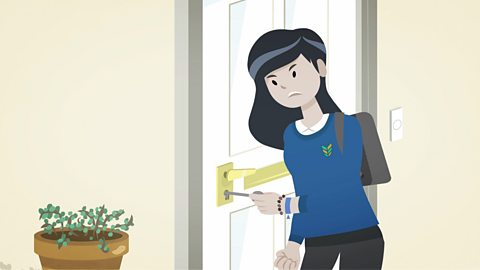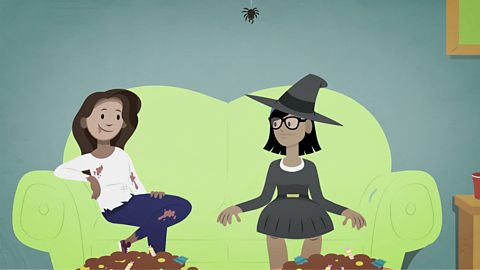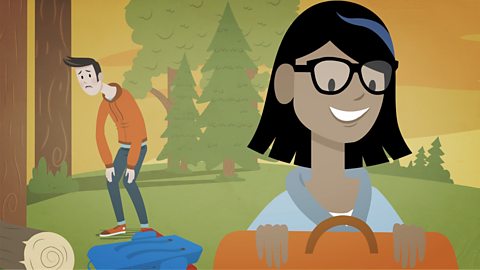Inspiration and expiration
Description
Garry paces nervously around his room and receives a text from Seren asking him to meet her in three minutes. Seeing the shortage of time, he sniffs his armpit and asks Alfred his app, how he smells. Alfred then describes the different parts of the respiratory system to Garry, followed by an explanation of the process of inhalation and exhalation. He describes the role of the diaphragm and intercostal muscles in creating a difference in pressure in the chest which results in air being drawn in or out of the lungs. The exchange of gases in the alveolus is also demonstrated.
Classroom Ideas
As an introduction, ask pupils if theyâve ever wondered what causes you to hiccup. Ask them how they think air is drawn into the lungs. The structures of the thorax could then be presented on the animation and the same question asked again. Inhalation could then be shown on the animation, stopped, then ask the pupils to predict how exhalation would take place. Introduce literacy opportunity by asking pupils to write a short passage to explain inhalation and exhalation. Key words from the animation could be given to ensure correct spelling and aid lower ability. As a follow up to the animation, encourage students to discuss diseases of the respiratory system caused by smoking such as cancer and emphysema. Extend students by asking them to write a report on the cause and effect of emphysema. Introduce numeracy opportunities with graphical data comparing smoking with smoking related diseases and how the number of cigarettes smoked increases smoking related diseases. Ask pupils to find the cost of a packet of cigarettes, calculate how much a week would be spent on them, how much a year, how much over 40 years? What else could they have bought with that money? Extend pupil knowledge by asking them to research the cost of smoking to the NHS, compared to the tax gained by the government in the sale of cigarettes. Two groups then present and debate their arguments to the class which form the audience, and at the end, the audience vote on the best argument. Ask more able students what would happen to pressure in the chest in the case of a punctured lung.
Cells, organ systems and ecosystems
Now playing video 2 of 6
- Now playing1:49

- Up next1:59

- 1:34

- 1:22
